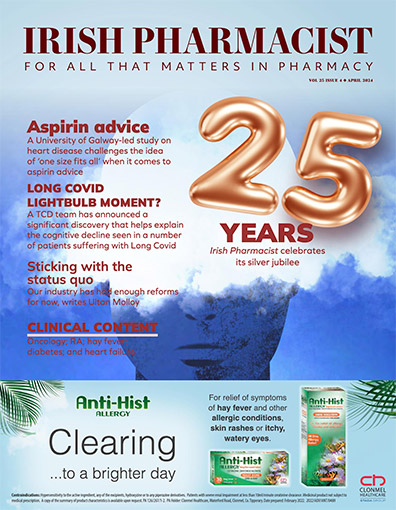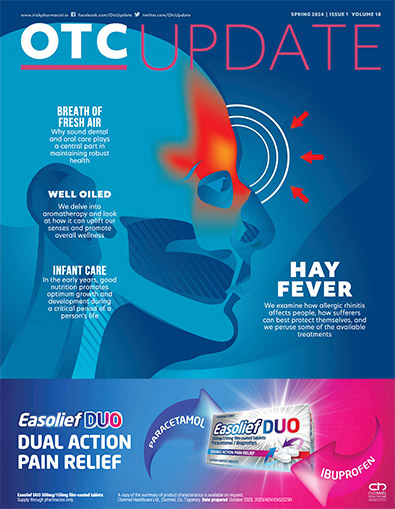25th EAHP Congress 2021
The congress also heard from Prof Stefan Groesser of the Bern University of Applied Sciences, and Dr Helena Jenzer of the University of Applied Sciences Bern/University Hospital of Psychiatry Zurich, and Dr Petrou
Panagiotis of the Health Insurance Organisation/University of Nicosia, who delivered a talk titled ‘New Strategies to Overcome Drug Shortages’.
Dr Jenzer presented some data on medicine shortages and what she described as “erroneous incentives and system leverages” that can inhibit medicine supplies, as well as a research project on the issue that was conducted by she and her colleagues. Using the analogies of traffic flows and natural water supplies in the Swiss alps, Dr Jenzer said: “We propose that APIs are kept in stock by wholesalers or if not by wholesalers, then perhaps directly from industry,” she said.
“If this is not possible, then we have to find alternative ways [to source them]… in terms of medicinal products, we do not have the blockbuster drugs in huge amounts nowadays, as industry has specialised more and more in personalised medicine and this needs additional sophisticated equipment, for example for gene cell therapies. That means that we can also re-scale in the future production chain, so instead of making products disappear from the market, when they can be transferred to small and medium enterprises. This would be a good option in our eyes.”
Providers could also in future be more aware of security of supply. “We should also omit tendering, because small enterprises are put in danger and perhaps DCI prescribing is also an option. Therapy paradigms could also be changed,” said Dr Jenzer. “If new buildings are constructed, they should be built with high capacities so that they will be sufficient for the next 20 years. Diagnostics is also something that healthcare providers should consider, because if a patient is recognised as non-responsive, there is no use in that person getting the treatment, so genetic profiling may be something that is coming in the next few years.”
She stressed the need for leadership in the supply chain, namely by government, as well as better remuneration for manufacturers of deregistration-threatened medicinal products and direct-to-hospital pharmacy delivery.
Dr Groesser reported on a simulation study by he and his colleagues that examined the causes and effects of medicine shortages, condensing literature on the subject.
The five main areas were economic and business decisions (including inventory management decisions); production-related reasons (including production capacity, especially in a time of high demand for medicines); demand-related (particularly if there is an unforeseen demand for medicines); price and reimbursement regulations; and market access-related reasons, where a company may decide not to enter into a small market, he told the congress.
Based on this data, Dr Groesser and colleagues developed a simulation model showing 11 primary and eight secondary causes of medicine bottlenecks, particularly in oncology. He provided an overview of the model, which covers inventory management and the decision-making process, as well as market demand expectations and availability of raw materials. “In a steady state, the system is stable and your inventory covers your demands,” he told the congress. “But then, when there is a ‘shock’ situation where there is no additional supply of your raw material, this leads to a drain on your coverage, which is then passed on to other tiers… so it ripples through the system.”
He explained: “This is a sound simulation model of essential supply chain dynamics that can demonstrate the major causes of shortages. It is a decision support tool aided towards the demonstration and design of better supply chain policies. What is needed are more discussions, guided by the means of the model, to arrive at a shared understanding of shortage situations and how to overcome them.”
Dr Panagiotis addressed the congress next and told the attendees: “We have to quantify the metrics of the problem [of medicine shortages]. There is not a ‘one size fits all’ solution — of course, you have to quantify the severity of shortages, such as the intensity, duration, market coverage and impact on public health, and the objective is to minimise the impact on public health domains.”
He pointed out that health technology assessments (HTAs) have several similarities with shortages. “Shortage management resembles a HTA; it is a group task, not an individual’s mission,” said Dr Panagiotis. “Experts argue that we can expand the context of HTAs by adding the notion of shortages as the introduction of regulatory flexibility enhancing suppliers.”
Generic drugs in particular, he pointed out, face intense price competition driven by uncertain revenue streams and high investment requirements and this results in a ‘race to the bottom’ scenario in pricing. “Several opportunistic providers enter the market, which disrupts the continuity of supply,” he said.
“For generics, the intense price pressure does not leave room for investment in manufacturing,” which results in capacity constraints. In terms of actions, he told the congress: “We must enhance the efficiency of regulatory procedures and implement fast-track processes to alleviate acute medicine shortages and regulate the special licences section, which can remedy shortages. We can also allow greater flexibility on the delivery of medicines and the movement of packs across borders during medicine shortages.”
Dr Panagiotis also urged a balance between fast-track temporary licences and the risk of abusing this scheme for attainment of a ‘permanent licence’. “We cannot afford to evade proper regulatory pathways,” he stressed. He also urged compulsory EU early notification requirements for manufacturers; although a relevant directive exists, it is not consistently implemented, he said. “Keep in mind that it’s probably unaffordable to invest for ‘cash cows’ or legacy products, which carry a high risk for shortages, both from a financial and manufacturing perspective.”
He concluded: “Now is the second-best time to take care of shortages — the best time was five years ago. But it’s never too early to intervene in shortages, which have a multi-layer causality. An array of approaches, which include pricing, manufacturing and regulatory actions, should be brought forward.”







